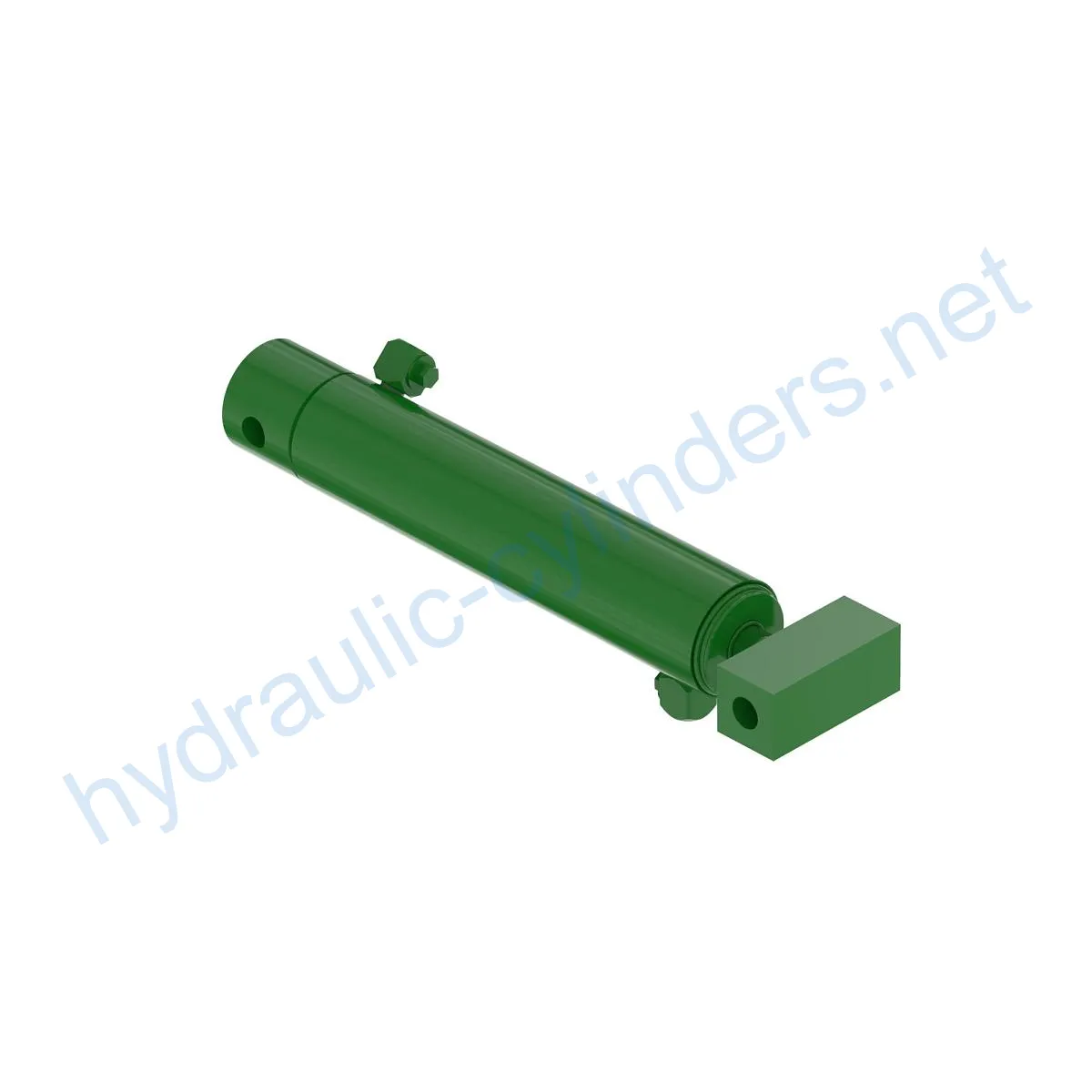Replacement Of AH210636 Hydraulic Cylinder
Kot eden od proizvajalcev, dobaviteljev in izvoznikov hidravličnih cilindrov ponujamo hidravlične cilindre in številne druge izdelke.
Za podrobnosti se obrnite na nas.
Pošta:sales@hydraulic-cylinders.net
Proizvajalec, dobavitelj in izvoznik hidravličnih cilindrov.
Replacement Of AH210636 Hydraulic Cylinder
This hydraulic cylinder is a replacement for the AH210636 model. It weighs 40.62 lb and has a height of 5 in, width of 5.5 in, and length of 24 in.
Introduction
The Replacement Of AH210636 Hydraulic Cylinder is an essential component in various hydraulic systems. It plays a crucial role in converting fluid power into mechanical force, enabling the smooth operation of equipment.
Specifications
- Weight: 40.62 lb
- Height: 5 in
- Width: 5.5 in
- Length: 24 in
Models
The Replacement Of AH210636 Hydraulic Cylinder is compatible with the 1790 and 1795 models.
Features
- Improved Equipment Performance: Replacing damaged or worn hydraulic cylinders restores the equipment’s normal operational capabilities, ensuring optimal performance in various applications.
- Enhanced Safety: Regularly replacing hydraulic cylinders reduces safety risks associated with cylinder failures, ensuring the safety of operators and equipment.
- Overload Protection: The design of new cylinders often incorporates better overload protection mechanisms, enhancing overall safety.
- Quick Installation: Modern hydraulic cylinders are designed for easy installation and replacement, minimizing downtime.
- Standardized Components: Many hydraulic cylinders are standardized, making it easier to obtain replacement parts in the market.
Applications
The Replacement Of AH210636 Hydraulic Cylinder finds utility in various applications:
- Excavators: Hydraulic cylinders in excavator arms or buckets may suffer damage or wear due to prolonged use or overloading, requiring replacement to restore normal operation.
- Cranes: Hydraulic cylinders in crane boom systems are prone to wear during frequent lifting and lowering processes, necessitating regular replacement to ensure safety.
- Tractors: Hydraulic cylinders in front-end loaders of tractors may develop leaks or performance degradation due to continuous lifting and tilting operations, requiring replacement.
- Harvesters: Hydraulic cylinders in harvesters bear high pressure during harvesting, and fatigue can lead to damage, requiring timely replacement to maintain work efficiency.
- Automated Production Lines: Hydraulic cylinders control robotic arms and other automated equipment. Cylinder failures can disrupt production efficiency, necessitating immediate replacement.
- Die-casting Machines: Hydraulic cylinders in die-casting machines may experience performance degradation in high-pressure and high-temperature environments. Regular replacement ensures product quality.
- Mining Equipment: Hydraulic cylinders in mining equipment are used for lifting and moving heavy loads. Due to harsh working conditions, regular inspection and replacement are necessary to avoid equipment failures.
- Bulldozers: Worn hydraulic cylinders on bulldozer blades can lead to decreased pushing capabilities, requiring timely replacement to maintain operational efficiency.
Maintenance
Regular Inspection
Regularly inspect the hydraulic cylinder for any signs of damage, leakage, or abnormal wear. Detecting issues early helps prevent major problems and ensures optimal performance.
Proper Lubrication
Ensure the hydraulic cylinder is adequately lubricated with the appropriate hydraulic oil. This helps reduce friction, extend the lifespan of components, and maintain smooth operation.
Seal Replacement and Calibration Check
Periodically replace worn seals to prevent leaks and optimize performance. Additionally, check the calibration of the hydraulic cylinder to ensure precise operation.
Safety Considerations and Environmental Factors
When working with hydraulic cylinders, it is crucial to prioritize safety measures. Proper handling, installation, and maintenance are essential to prevent accidents and ensure operator well-being. Adhering to environmental regulations regarding hydraulic fluids disposal is also important to minimize environmental impact.
Troubleshooting and Common Issues
Problem: Cylinder Leakage
Possible Causes: Worn seals, damaged piston rod
Solution: Replace worn seals and repair or replace the damaged piston rod.
Problem: Insufficient Force
Possible Causes: Insufficient hydraulic pressure, internal leakage
Solution: Check the hydraulic pressure and repair any internal leakage to restore the cylinder’s force output.
Problem: Erratic Cylinder Movement
Possible Causes: Contaminated hydraulic fluid, valve malfunctions
Solution: Flush and replace the hydraulic fluid, and inspect and repair any faulty valves.
Problem: Excessive Noise or Vibration
Possible Causes: Loose mounting, damaged components
Solution: Ensure proper mounting and tighten all connections. Replace any damaged components contributing to the noise or vibration.
Problem: Cylinder Drift
Possible Causes: Internal leakage, faulty valves
Solution: Repair internal leakage and inspect and repair/replace any malfunctioning valves causing the drift.
Preventive Measures
To minimize potential issues and extend the lifespan of the hydraulic cylinder:
- Follow proper installation procedures and align the cylinder correctly.
- Use appropriate installation brackets to secure the cylinder in place.
- Recommend regular inspection, repair, and replacement procedures.
- Offer replacement parts and rebuilding services to ensure longevity of the hydraulic cylinder.
- Provide tips for extending the lifespan of the hydraulic cylinder through proper maintenance and usage techniques.

Design Considerations and Selection Criteria
When designing and selecting hydraulic cylinders, several factors should be taken into account:
- Load-bearing capacity
- Sealing effectiveness
- Durability
- Safety features
- Maintainability
Sealing and Lubrication
The Replacement Of AH210636 Hydraulic Cylinder utilizes various sealing components such as piston seals and rod seals made of wear-resistant materials like polyurethane and nitrile rubber. The cylinder body and threaded ends undergo meticulous surface treatment to enhance wear resistance. Regular lubrication with the appropriate hydraulic oil is necessary to ensure smooth operation.
Regular Inspection and Preventive Maintenance
Regularly inspect the hydraulic cylinder for any signs of wear, leaks, or misalignment. Follow proper installation, lubrication, and adjustment procedures. Providing correct alignment guidance during the installation process and recommending the use of suitable installation brackets to secure the cylinder are essential. Offer recommended inspection, repair, and replacement programs. Additionally, provide parts replacement and rebuilding services to ensure the extended lifespan of the hydraulic cylinder. Tips and techniques for increasing the cylinder’s lifespan should be shared with users.
Product Installation Guide
Proper installation is crucial for optimal performance and longevity of the hydraulic cylinder. Follow these steps:
- Prepare the mounting
Take a Tour of Our VR Factory:
Take a tour of our VR factory with the following
Hydraulic Cylinder Application:


